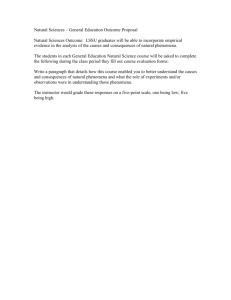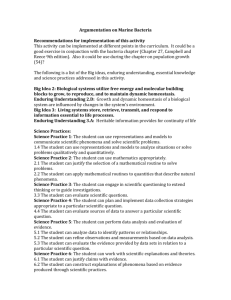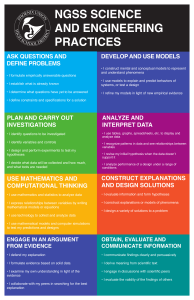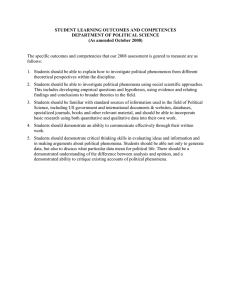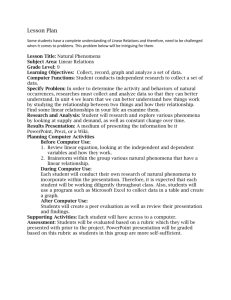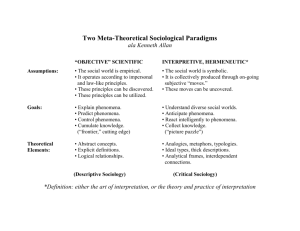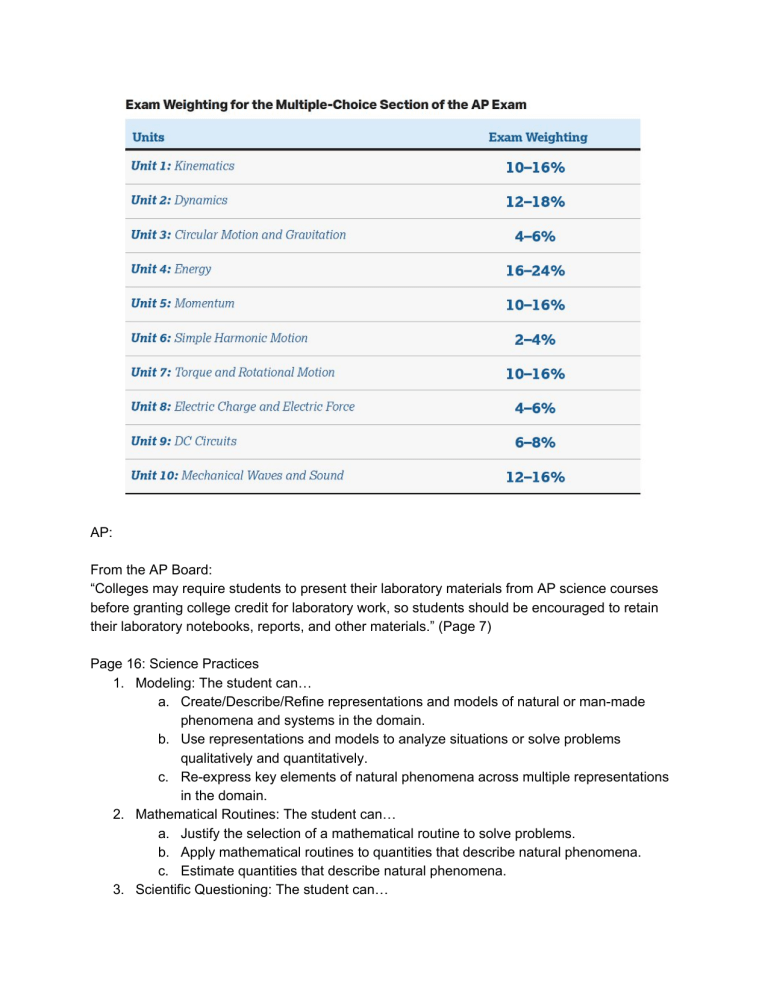
AP: From the AP Board: “Colleges may require students to present their laboratory materials from AP science courses before granting college credit for laboratory work, so students should be encouraged to retain their laboratory notebooks, reports, and other materials.” (Page 7) Page 16: Science Practices 1. Modeling: The student can… a. Create/Describe/Refine representations and models of natural or man-made phenomena and systems in the domain. b. Use representations and models to analyze situations or solve problems qualitatively and quantitatively. c. Re-express key elements of natural phenomena across multiple representations in the domain. 2. Mathematical Routines: The student can… a. Justify the selection of a mathematical routine to solve problems. b. Apply mathematical routines to quantities that describe natural phenomena. c. Estimate quantities that describe natural phenomena. 3. Scientific Questioning: The student can… 4. 5. 6. 7. a. Pose scientific questions. b. Refine scientific questions. c. Evaluate scientific questions. Experimental Methods: The student can… a. Justify the selection of the kind of data needed to answer a particular scientific question. b. Design a plan for collecting data to answer a particular scientific question. c. Collect data to answer a particular scientific question. d. Evaluate sources of data to answer a particular scientific question. Data Analysis: The student can… a. Analyze data to identity patterns of relationships. b. Refine observations and measurements based on data analysis. c. Evaluate the evidence provided by data sets in relation to a particular scientific question. Argumentation: The student can… a. Justify claims with evidence. b. Construct explanations of phenomena based on evidence produced through scientific practices. c. Articulate the reasons that scientific explanations and theories are refined or replaced. d. Make claims and predictions about natural phenomena based on scientific theories and models. e. Evaluate alternative scientific explanations. Making Connections: The student can… a. Connect phenomena and models across spatial and temporal scales. b. Connect concepts in and across domain(s) to generalize or extrapolate in and/or across enduring understandings and/or big ideas.
